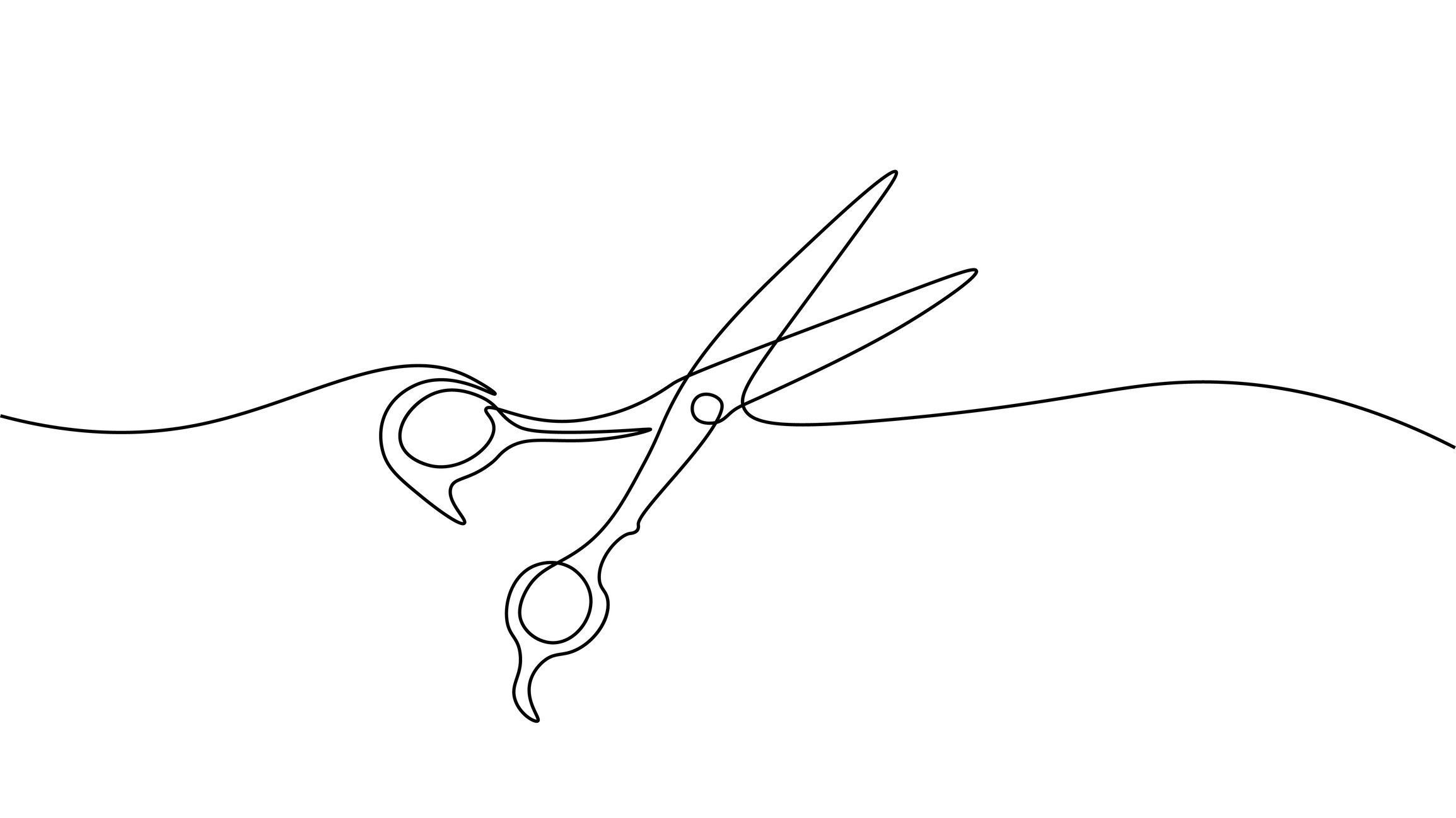预约演示
更新于:2025-07-31
PEC QT
更新于:2025-07-31
概要
基本信息
药物类型 干细胞疗法、CRISPR/Cas9 |
别名 Gene-edited stem cell derived allogeneic beta-cell replacement therapy - CRISPR Therapeutics、PEC-QT、VCTX-210 |
作用方式 抑制剂、调节剂 |
作用机制 B2M抑制剂(β2微球蛋白抑制剂)、HLA-E modulators(major histocompatibility complex, class I, E modulators)、PDL1调节剂(程序性死亡配体1调节剂) |
在研适应症- |
非在研适应症 |
在研机构- |
最高研发阶段无进展临床1期 |
首次获批日期- |
最高研发阶段(中国)- |
特殊审评- |
登录后查看时间轴
关联
1
项与 PEC QT 相关的临床试验NCT05210530
An Open-Label, First-In-Human Study Evaluating the Safety and Tolerability of VCTX210A Combination Product in Subjects With Type 1 Diabetes Mellitus (T1D)
This is an open-label, multicenter, Phase 1 study evaluating the safety and tolerability of VCTX210A combination product in patients with T1D
开始日期2022-01-24 |
申办/合作机构 |
100 项与 PEC QT 相关的临床结果
登录后查看更多信息
100 项与 PEC QT 相关的转化医学
登录后查看更多信息
100 项与 PEC QT 相关的专利(医药)
登录后查看更多信息
34
项与 PEC QT 相关的新闻(医药)2024-02-02
·同写意
尧唐生物宣布正式任命Tony W. Ho为科学顾问,加强尧唐在体内基因编辑药物开发方面的研发实力。Tony W. Ho博士是一位备受尊敬的药物开发专家,在美国知名基因编辑企业CRISPR Therapeutics担任执行副总裁兼研发负责人期间,他成功领导和建立了一支世界领先的研发团队,并推动了多个治疗产品的研发和推广。其中包括以CRISPR基因编辑结合造血干细胞移植,治疗镰刀状贫血和地中海贫血的药物Exa-cel,以及三个通用型CAR-T产品——CTX110(CD19)、CT120(BCMA)、CT130(CD70)。此外,他还开发了第一个CRISPR编辑的胰岛祖细胞产品VCTX210,并将这些产品推进至临床阶段。值得一提的是,Exa-cel最终在美国完成临床试验,成为全世界第一个获批上市的基因编辑药物(商品名:CASGEVY)。在加入CRISPR Therapeutics之前,Tony W. Ho博士在阿斯利康担任高级副总裁兼肿瘤创新研发部负责人,领导了利普卓(奥拉帕利)、英飞凡(度伐利尤单抗)和 Imjudo(曲美木单抗/替西木单抗)等多个药物的开发和商业化工作。他带领启动的10个III期临床试验目前已经得到阳性结果(利普卓的七项临床试验,包含卵巢癌、三阴性乳腺癌、胰腺癌和结直肠癌;英飞凡的三项临床试验,包含非小细胞肺癌和小细胞肺癌)。成功重新定位了PCOS失效的NK3拮抗剂,并荣获2013 AZ年度专利奖,在多个生物医药领域的研究和创新中做出了重要贡献。在此之前,他也曾担任默克神经科学和眼科研发部负责人和Neuronyx联合创始人兼首席科学官。Tony W. Ho博士拥有约翰霍普金斯大学医学博士学位和加州大学洛杉矶分校电子工程学士学位,并担任宾夕法尼亚大学神经学兼职副教授和约翰霍普金斯大学神经学助理教授,在多个领域发表了80余篇论文。Tony W. Ho博士表示:我很高兴加入尧唐生物,这是一个充满活力和创新的团队合作,在基因编辑药物领域取得了令人瞩目的进展。我期待着为其贡献我的知识与经验。尧唐生物创始人兼CEO,吴宇轩博士表示:尧唐生物非常荣幸邀请到Tony W. Ho博士作为科学顾问加入团队。我们相信他丰富的专业经验、独到的战略眼光和专注于创新药开发的热情将助力我们的药物开发,早日为患者提供更先进、更创新的新一代体内基因编辑药物。作为科学顾问,Tony W. Ho博士将为尧唐生物提供专业指导和战略规划,帮助企业在不断变化的生物医药行业中保持创新领先地位。通过与Tony W. Ho博士的合作,尧唐生物将继续推动生物医药领域的创新,并为全球患者提供更好的治疗选择。关于尧唐生物尧唐生物是一家以创新为驱动的高科技生物技术公司,专注于体内基因编辑技术,并通过mRNA-LNP递送系统开发新一代体内基因编辑药物。尧唐生物依托多个技术创新平台,成功发掘和进化了新一代基因编辑器YolCas和碱基编辑器YolBE,获得了具有自主知识产权的新型脂质纳米颗粒(LNP),实现了更高效率的体内递送。公司的产品管线可覆盖针对心血管疾病、代谢疾病、传染性疾病及更多常见慢性疾病和遗传性疾病的治疗,并对靶向适应症实现“一次给药、终身治愈”的治疗效果。尧唐生物已建立上海研发总部和南京GMP生产基地,并开发了完善的mRNA-LNP药物生产工艺及分析检测平台,目前已于2023年完成首个基于LNP递送的体内基因编辑药物的临床申报和首例受试者给药。关于同写意 同写意论坛是中国新药研发行业权威的多元化交流平台,二十年来共举办会议论坛百余期。“同写意新药英才俱乐部”基于同写意论坛而成立,早已成为众多新药英才的精神家园和中国新药思想的重要发源地之一。同写意在北京、苏州、深圳、成都设立多个管理中心负责同写意活动的运营。尊享多重企业/机构会员特权 ● 分享庞大新药生态圈资源库;● 同写意活动优享折扣;● 会员专属坐席及专家交流机会;● 同写意活动优先赞助权;● 机构品牌活动策划与全方位推广;● 秘书处一对一贴心服务。入会请联系同写意秘书处 同写意创新链盟机构 (上下滑动查看更多)汇芯生物 | 申科生物 | 方拓生物 | 东抗生物 | 科盛达 | 依利特 | 翊曼生物丨锐拓生物丨复百澳生物丨圆因生物丨普洛斯丨华润三九丨皓阳生物丨人福医药丨广生堂药业丨澳宗生物丨妙顺生物 | 荣捷生物丨行诚生物 | 宜联生物 | 生命资本 | 恒诺康丨益诺思 | 深圳细胞谷丨佰诺达生物 | 沃臻生物 | 金仪盛世 | 朗信生物 | 亦笙科技 | 中健云康 | 九州通 | 劲帆医药 | 沙砾生物 | 裕策生物 | 同立海源 | 药明生基 | 奥浦迈 | 原启生物 | 百力司康 | 宁丹新药 | 上海细胞治疗集团 | 滨会生物 | FTA | 派真生物 | 希济生物 | 优睿赛思 | 血霁生物 | 优睿生物 | 邦耀生物 | 华大基因 | 银诺生物 | 百林科医药 | 纳微科技 | 可瑞生物 | 夏尔巴生物 | 金斯瑞蓬勃生物 | 健元医药 | 星眸生物 | 格兰科医药 | 莱羡科学仪器 | 明度智云 | 玮驰仪器 | 康源久远 | 易慕峰 | 茂行生物 | 济民可信 | 欣协生物 | 泰楚生物 | 泰澧生物 | 谱新生物 | 思鹏生物 | 领诺医药 | 宜明生物 | 爱科瑞思 | 阿思科力 | 博格隆生物 | 百吉生物 | 迈邦生物 | 多宁生物 | 万邦医药 | ASCT | 为度生物 | 比邻星创投 | 赛桥生物 | 吉美瑞生 | 荣泽生物 | 科金生物 | 汉超医药 | 康日百奥 | 汉腾生物 | 力品药业 | 安必生 | 博瑞策生物 | 中盛溯源 | 深研生物 | 东方略 | 赛赋医药 | 克睿基因 | 安润医药 | 镁伽科技 | 科锐迈德 | 和元生物 | 申基生物 |楷拓生物| 森松生命科技 | 凯理斯 | 尚德药缘 | 晟国医药 | 健新原力 | 纽福斯 | 华东医药 | 士泽生物 | 影研医疗科技 | 新格元生物 | 依生生物 | 腾迈医药 | 汉欣医药 | 恒驭生物 | 盛诺基 | 序祯达生物 | 乐纯生物 | 速石科技 | 耀海生物 | 新合生物 | 华龛生物 | 恺佧生物 | 成都凡微析 | 正帆科技 | 大橡科技 | 博雅辑因 | 因美纳 | 博雅控股集团 | 近岸蛋白 | 依科赛生物 | 利穗科技 | 东南科仪 | 倍谙基 | 辉诺医药 | 圣诺制药 | 埃格林医药 | 科镁信 | 爱思益普 | 复星医药 | 齐鲁制药 | 捷思英达丨荣昌生物丨泽璟制药丨奕安济世丨礼新医药丨维立志博丨派格生物丨赛生药业丨呈源生物丨启德医药丨双运生物丨宝船生物丨曙方医药丨澳斯康生物丨普莱医药丨维健医药丨海昶生物丨征祥医药丨智核生物丨望石智慧丨博生吉医药丨南京诺丹丨四星玻璃丨艾米能斯丨霁因生物丨普瑞康生物丨映恩生物丨康哲生物丨霍德生物丨海慈药业丨沃生生物丨睿健医药丨矩阵元丨斯微生物丨则正医药丨预立创投丨东立创新丨博安生物丨伟德杰生物丨星奕昂生物丨耀乘健康科技丨琅钰集团丨康德弘翼 | 原力生命科学丨上海科洲丨特瑞思丨药源丨健艾仕生物丨冠科美博丨微境生物丨天境生物丨合源生物丨泛生子丨创胜集团丨加科思药业丨丹诺医药丨凌科药业丨偶领生物丨凯斯艾生物丨成都圣诺丨松禾资本丨清普生物丨和其瑞丨开拓药业丨科兴制药丨玉森新药丨水木未来丨分享投资丨植德律所丨奥来恩丨乐明药业丨东曜药业丨君圣泰丨海创药业丨天汇资本丨再鼎医药丨济煜医药丨百英生物丨基石药业丨君实生物丨Sirnaomics,Inc.丨亦诺微丨博腾股份丨思路迪诊断丨艾博生物丨普瑞金生物丨未知君生物丨尚健生物丨阿诺医药丨有临医药丨赛业生物丨睿智医药丨博济医药丨晶泰科技丨药明康德丨创志科技丨奥星集团丨苏雅医药丨科贝源丨合全药业丨以岭药业丨科睿唯安丨DRG丨博瑞医药丨丽珠医药丨信立泰药业丨步长制药丨华素制药丨众生药业丨上海医药丨高博医疗集团丨药渡丨君联资本丨集萃药康丨诺思格丨精鼎医药丨百利药业丨Pfizer CentreOne丨默克中国创新中心丨奥来恩丨瑞博生物丨新通药物丨广东中润丨医普科诺丨诺唯赞丨康利华丨国信医药丨昆翎丨博纳西亚丨缔脉丨一品红丨和泽医药丨博志研新丨凯莱英医药丨汉佛莱丨英派药业丨京卫制药丨海思科药业丨宏韧医药丨开心生活科技丨哈三联丨Premier Research丨宣泰医药丨先声药业丨海金格丨普瑞盛医药丨Informa丨科特勒丨谋思医药丨HLT丨莱佛士丨辉瑞丨科林利康丨冠科生物丨科文斯丨卫信康丨龙沙(Lonza)丨美迪西丨阳光诺和丨润东医药丨勃林格殷格翰(中国)丨艾苏莱生物丨领晟医疗丨驯鹿医疗丨燃石医学丨中肽生化丨鸿运华宁丨泰格医药丨易迪希丨希麦迪丨百奥赛图丨迪纳利丨青云瑞晶丨鼎丰生科资本丨中源协和丨维亚生物丨青松医药丨中科谱研丨长风药业丨艾欣达伟丨鼎康生物丨中晟全肽丨海步医药丨勤浩医药丨奥萨医药丨太美医疗科技丨生特瑞丨东富龙丨Cytiva丨优辰实验室丨苏桥生物丨君达合创丨澎立生物丨南京澳健丨南京科默丨东阳光丨亚盛医药丨杰克森实验室丨上海科州丨三优生物丨三迭纪丨泰诺麦博丨Cell Signaling Technology丨PPC佳生丨澳斯康丨先为达丨智享生物丨锐得麦丨宜明昂科丨明济生物丨英百瑞丨六合宁远丨天津天诚丨百拓生物丨星药科技丨亓上生物丨真实生物丨引光医药丨方达医药丨高博医疗集团丨赞荣医药丨国投创新丨药明生物丨康哲药业丨高特佳投资丨普瑞基准丨臻格生物丨微谱医药丨和玉资本 | 倚锋资本
细胞疗法基因疗法高管变更免疫疗法
2024-01-09
Pictured: Entrance to Vertex's office in Boston, Massachusetts/iStock, hapabapa
Vertex Pharmaceuticals’ subsidiary ViaCyte Inc. is not pushing through with its diabetes deal with CRISPR Therapeutics, the Swiss biotech announced Monday.
The partners—which had recently won the FDA’s approval for Casgevy (exagamglogene autotemcel), the first CRISPR-based gene therapy for sickle cell disease—were supposed to advance a gene-edited stem cell therapy for diabetes. Vertex’s opt-out of the deal will take effect in early February 2024.
As per the original agreement, which was signed in September 2018 between ViaCyte and CRISPR, the biotechs would combine ViaCyte’s stem cell expertise with CRISPR’s gene editing technologies to develop a potential beta-cell replacement product that could help patients produce their own insulin without inducing an immune reaction.
In February 2022, the partners dosed the first patient in their Phase I trial of this allogeneic gene-edited cell replacement therapy, dubbed VCTX210.
Vertex bought ViaCyte a few months later, in July 2022, for $320 million in cash. At the time, CEO and president Reshma Kewalramani said that the acquisition would “accelerate our goal of transforming, if not curing T1D.” VCTX210, along with ViaCyte’s platform, was meant to complement Vertex’s own diabetes portfolio, headlined by VX-880, likewise a stem-cell derived insulin-producing islet cell therapy.
Now, because Vertex is backing out of the partnership, all ongoing collaboration assets will be completely owned by CRISPR, though ViaCyte will still be eligible for royalties on net future sales.
Outside of the ViaCyte collaboration, Vertex is still partnered with CRISPR for a non-exclusive license to the latter’s CRISPR/Cas9 platform to develop a potentially curative cell treatment for type 1 diabetes. This agreement was signed in March 2023 and saw Vertex pay $100 million upfront, as well as pledge up to $230 million in research and development milestones, plus royalties.
ViaCyte opting out of the CRISPR partnership comes one day after Vertex Pharmaceuticals announced that it had paused the Phase I/II study of VX-880 following two patient deaths. The company had found that the mortalities were unrelated to the study drug and said that the suspension was “protocol-specified.” Global regulatory authorities and an independent data monitoring committee will review the data from that study.
Aside from VX-880, Vertex is also advancing VX-264 for type 1 diabetes, for which it is currently in Phase I/II assessments. The candidate uses stem cell–derived islet cells encapsulated in a protective device, which in turn will be implanted into a patient and help produce insulin. According to Vertex’s website, the device protects VX-264 from the immune system, thereby eliminating the need for immunosuppressive therapy.
Tristan Manalac is an independent science writer based in Metro Manila, Philippines. He can be reached at tristan@tristanmanalac.com or tristan.manalac@biospace.com.
并购细胞疗法临床1期引进/卖出基因疗法
2024-01-08
CRISPR disclosed the loss of the Vertex-ViaCyte deal as part of an update on its plans for 2024.
Vertex is severing one of its ties to CRISPR Therapeutics. The big biotech has chosen to opt out of the diabetes gene-edited stem cell therapy it gained through the acquisition of ViaCyte, leaving CRISPR to take the clinical-phase program forward itself.
CRISPR teamed up with ViaCyte in 2021. The alliance positioned CRISPR to combine its gene-editing skills with ViaCyte’s ability to generate pancreatic-lineage cells from stem cells. Through editing, CRISPR aimed to create beta cells that evade the immune system and thereby enable people with diabetes to receive insulin-producing cells without long-term immunosuppression to avoid rejection.
An initial drug candidate, VCTX210, entered the clinic in 2022, followed by a next-generation prospect the next year. CRISPR, which will wholly own the assets once the opt-out is complete, plans to keep running a phase 1 clinical trial of the next-generation candidate, now called CTX211, without the support of Vertex and ViaCyte. The completion date of the clinical trial is in 2025.
Vertex also remains active in diabetes cell therapy, including in partnership with CRISPR. In March, Vertex paid $100 million for non-exclusive rights to its partner’s CRISPR-Cas9 technology in hypoimmune cell therapies for type 1 diabetes. CRISPR received a further $70 million from Vertex later in the year and is still in line to receive up to $160 million in R&D milestones.
The CRISPR deal is one of several pacts Vertex struck to establish diabetes as a potential growth driver. Vertex has two diabetes cell therapies in clinical development, including one asset, VX-264, that is being evaluated without the use of immunosuppressive therapy. With its own irons in the fire, the biotech has decided to do without its CRISPR-partnered program.
CRISPR disclosed the loss of the Vertex-ViaCyte deal as part of an update on its plans for 2024. Other bits of news in the update included details of CRISPR’s plans to study its CD19-directed CAR-T candidate in lupus.

细胞疗法并购基因疗法免疫疗法临床1期
100 项与 PEC QT 相关的药物交易
登录后查看更多信息
研发状态
10 条进展最快的记录, 后查看更多信息
登录
| 适应症 | 最高研发状态 | 国家/地区 | 公司 | 日期 |
|---|---|---|---|---|
| 1型糖尿病 | 临床1期 | 加拿大 | 2022-01-24 | |
| 1型糖尿病 | 临床1期 | 加拿大 | 2022-01-24 |
登录后查看更多信息
临床结果
临床结果
适应症
分期
评价
查看全部结果
| 研究 | 分期 | 人群特征 | 评价人数 | 分组 | 结果 | 评价 | 发布日期 |
|---|
No Data | |||||||
登录后查看更多信息
转化医学
使用我们的转化医学数据加速您的研究。
登录
或

药物交易
使用我们的药物交易数据加速您的研究。
登录
或

核心专利
使用我们的核心专利数据促进您的研究。
登录
或

临床分析
紧跟全球注册中心的最新临床试验。
登录
或

批准
利用最新的监管批准信息加速您的研究。
登录
或

特殊审评
只需点击几下即可了解关键药物信息。
登录
或

生物医药百科问答
全新生物医药AI Agent 覆盖科研全链路,让突破性发现快人一步
立即开始免费试用!
智慧芽新药情报库是智慧芽专为生命科学人士构建的基于AI的创新药情报平台,助您全方位提升您的研发与决策效率。
立即开始数据试用!
智慧芽新药库数据也通过智慧芽数据服务平台,以API或者数据包形式对外开放,助您更加充分利用智慧芽新药情报信息。
生物序列数据库
生物药研发创新
免费使用
化学结构数据库
小分子化药研发创新
免费使用

